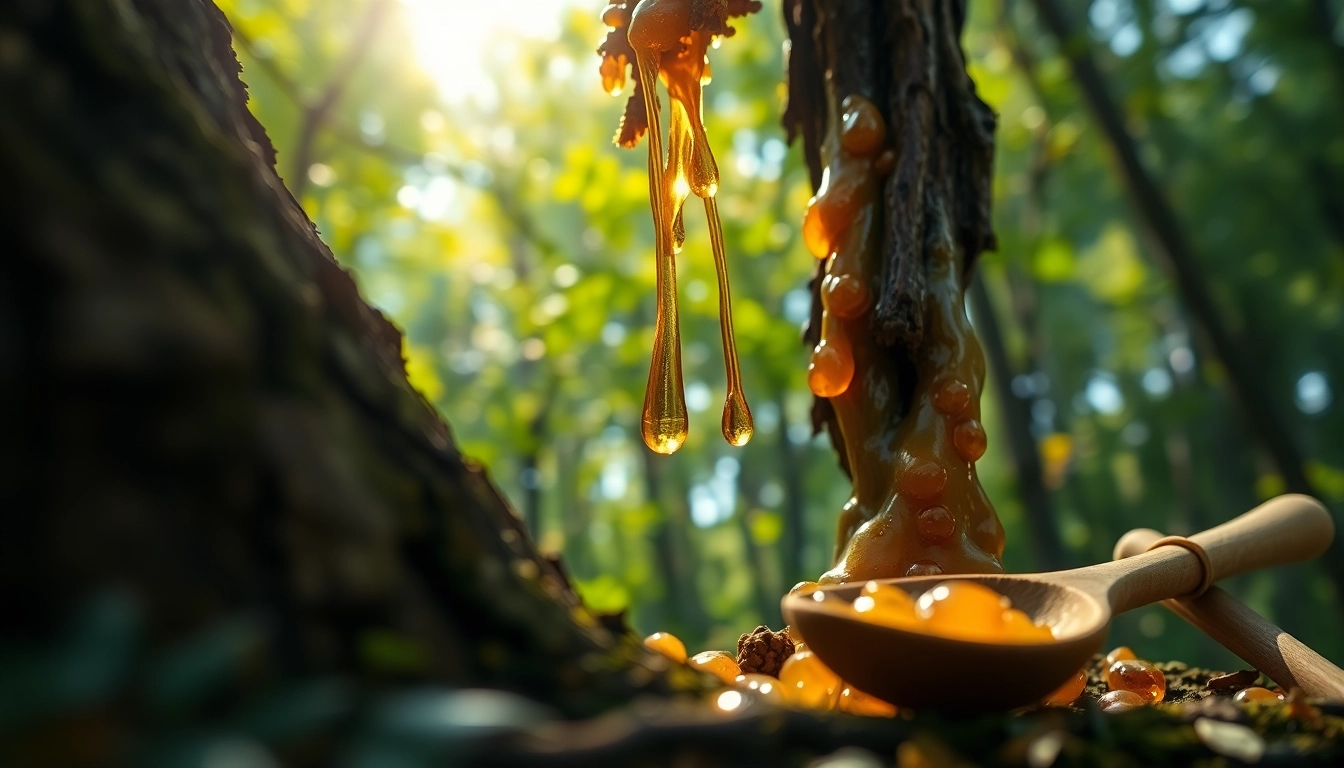Understanding Myrrh: Origins and Cultural Significance
What is Myrrh and Where Does it Come From?
Myrrh is a resin obtained from the Commiphora tree, predominantly found in arid regions of the Middle East and parts of Africa. The extraction process of myrrh involves incising the bark of the tree, allowing the resin to seep out. After a period of time, this sap hardens into a gum-like substance, which is later harvested. Historically, myrrh has been valued not only for its aromatic qualities but also for its extensive applications in various cultures. Today, many people seek myrrh for its health benefits and unique properties.
The Role of Myrrh in Ancient Cultures
Myrrh holds a significant place in the traditions of many ancient civilizations. The Egyptians, for instance, utilized myrrh in the embalming process, with its antibacterial properties helping to preserve bodies for mummification. It was also used in religious ceremonies, symbolizing sanctity and purification. In ancient Israel, myrrh was mentioned in biblical texts, emphasizing its importance in rituals and healing practices. Furthermore, trade routes of the time often included myrrh, showcasing its value in commerce between cultures.
Spiritual and Ritual Uses of Myrrh
Myrrh has been synonymous with spirituality and the divine throughout history. In many religious traditions, it is burned as incense during rituals and ceremonies to facilitate connection with the divine. It is believed to enhance meditation and reflection, contributing to mental clarity and emotional tranquility. The soothing aroma of myrrh has made it a staple in various spiritual practices, with many practitioners using it to cleanse spaces and invite positive energies.
Myrrh in Traditional Medicine: Uses and Benefits
Healing Properties of Myrrh Essential Oil
Myrrh essential oil is extracted from the resin of the myrrh tree and is renowned for its healing properties. This essential oil contains a complex composition of natural compounds, including sesquiterpenes, which have been shown to possess anti-inflammatory, analgesic, and antimicrobial effects. It is commonly used in aromatherapy for soothing emotional distress, boosting immunity, and promoting overall wellness. Additionally, when diluted with a carrier oil, myrrh essential oil can be applied topically to aid in healing skin irritations and wounds.
Myrrh as a Natural Antiseptic
Due to its natural antiseptic properties, myrrh has been historically used to treat infections and promote wound healing. Research supports its use in traditional medicine as a topical antiseptic, aiding in the prevention of bacterial growth. Myrrh can also alleviate symptoms of oral conditions, such as gum disease and oral ulcers. Incorporating myrrh into mouth rinses or toothpaste can offer additional benefits for oral hygiene, ensuring gum health and fresher breath.
Traditional Remedies Involving Myrrh
Throughout history, various traditional remedies have leveraged the benefits of myrrh. In Ayurvedic medicine, myrrh is often used to support digestive health and alleviate respiratory ailments. In traditional Chinese medicine, it is utilized to promote circulation and relieve pain related to bruising and minor injuries. Different cultures have adopted myrrh as a remedy for a variety of conditions, including coughs, arthritis, and skin disorders, highlighting its versatility as a natural healing agent.
Scientific Studies on Myrrh: What the Research Shows
Overview of Contemporary Research on Myrrh
Recent studies have provided insights into the therapeutic potentials of myrrh, paving the way for more scientific exploration. Research has expanded beyond anecdotal evidence, focusing on the biological activities linked to myrrh’s active compounds. Scientists continue to investigate myrrh’s benefits across various fields, including pharmacology, dermatology, and oncology, confirming its role as a promising natural remedy.
Efficacy of Myrrh in Pain Relief
Several studies have highlighted the efficacy of myrrh in pain relief, particularly due to its anti-inflammatory properties. Research demonstrates that myrrh may effectively relieve discomfort associated with conditions like arthritis and other inflammatory disorders. Animal studies have shown promising results, indicating that myrrh extracts can substantially reduce pain levels, leading to a growing interest in utilizing it for chronic pain management in humans.
Myrrh’s Antioxidant Properties: Findings and Implications
Myrrh contains a variety of antioxidant compounds that combat oxidative stress in the body. This property is linked to numerous health benefits, including inflammation reduction and cellular protection. Studies have indicated that myrrh extracts can scavenge free radicals and protect cells from damage, illustrating potential applications in developing anti-aging products and overall health supplements. The implications of myrrh’s antioxidant effects span across various health disciplines, showing promise in disease prevention strategies.
How to Use Myrrh in Your Daily Routine
Incorporating Myrrh in Aromatherapy
Aromatherapy provides an accessible way to experience the benefits of myrrh. To incorporate myrrh into your daily routine, consider using an oil diffuser with myrrh essential oil. The oil can create a serene environment, reducing anxiety and promoting relaxation. Additionally, creating personalized blends with other essential oils, like frankincense or lavender, can enhance your aromatherapy experience for physical and emotional well-being.
Myrrh in Topical Applications: Recipes and Tips
If you’re interested in using myrrh topically, numerous DIY recipes exist. A simple blend involves mixing a few drops of myrrh essential oil with a carrier oil such as coconut or jojoba oil for skin applications. This blend can improve skin elasticity and reduce the appearance of scars. Additionally, incorporating myrrh in homemade salves for minor wounds or inflammation can harness its antiseptic properties effectively.
Finding Quality Myrrh Products: What to Look For
When shopping for myrrh products, quality is paramount. Look for products labeled as “100% pure” and check for GC/MS (Gas Chromatography-Mass Spectrometry) testing results, which confirm the purity and authenticity of essential oils. Be cautious of synthetic blends that might dilute the benefits of myrrh. It’s also advisable to choose sustainably sourced myrrh from trustworthy suppliers to ensure ethical practices.
Myrrh’s Future: Sustainability and Ethical Sourcing
The Importance of Sustainable Harvesting Practices
With increasing demand for myrrh, sustainable harvesting practices are essential to prevent over-exploitation of Commiphora trees. Advocating for sustainable methods ensures that these trees can thrive and continue to provide resin without disrupting the ecosystem. Many organizations emphasize the importance of educating local communities on sustainable harvesting to balance economic needs with environmental preservation.
Supporting Fair Trade Myrrh Producers
Supporting fair trade practices in the myrrh market is crucial for empowering communities where the trees grow. Fair trade certification guarantees that workers receive fair wages and operate in safe conditions. As consumers, choosing products from reputable sources that adhere to fair trade principles can help uplift producers and foster sustainable development in these regions.
The Future of Myrrh in Global Markets
The future of myrrh in global markets hinges on understanding consumer trends and preferences. As more individuals pursue natural remedies and holistic health solutions, the demand for myrrh and other herbal products is likely to rise. Innovators are exploring new applications of myrrh in cosmetics, wellness supplements, and alternative medicines. This shift presents opportunities for ethical sourcing, creative product development, and sustainable trade practices that respect the rich history of this ancient resin while meeting modern needs.



